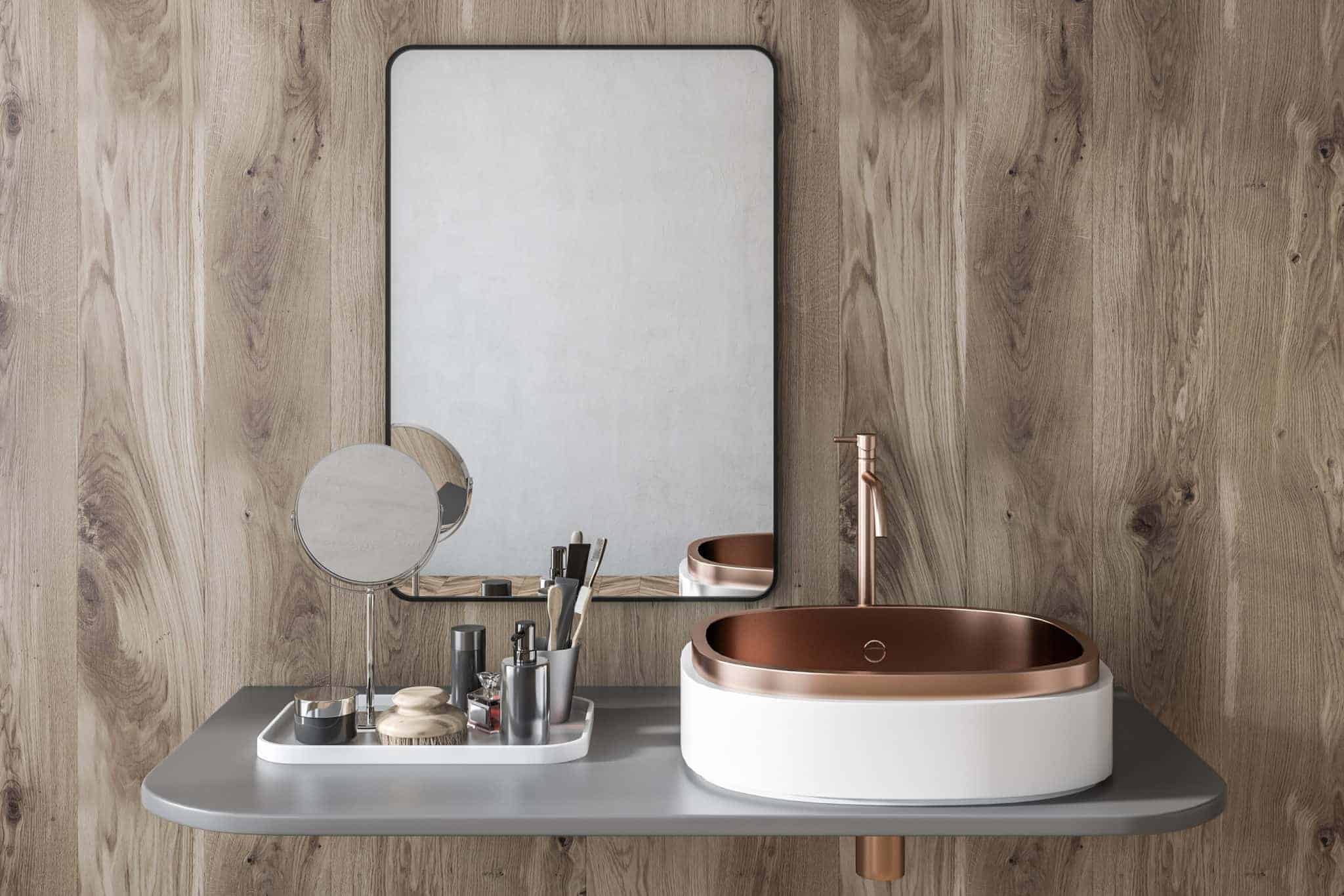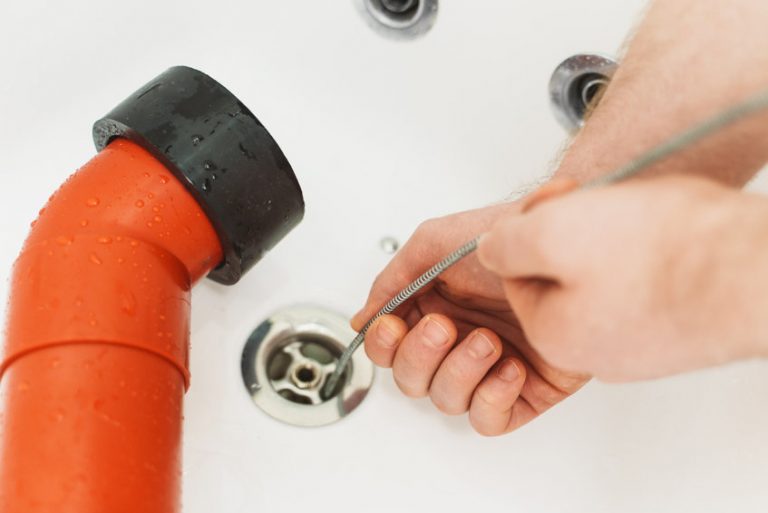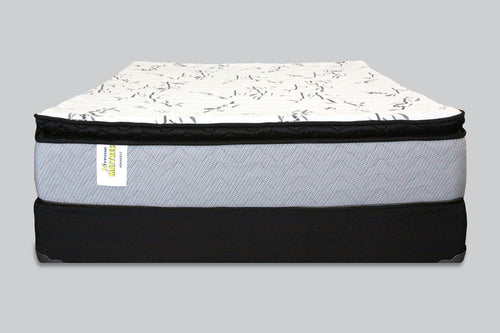How to Snake a Bathroom Sink: A Step-by-Step Guide
Dealing with a clogged bathroom sink can be a frustrating and unpleasant experience. But before you reach for harsh chemicals or call a plumber, consider snaking your sink. This simple and cost-effective solution can unclog your sink and have it running smoothly again in no time. Follow these easy steps to learn how to snake a bathroom sink and say goodbye to clogs for good!
How to Unclog a Bathroom Sink with a Snake
Before you begin, make sure you have the right tools for the job. You will need a drain snake, also known as a plumber's snake, which can be purchased at most hardware stores. You may also need a bucket or old towel to catch any debris that comes out of the drain.
To start, remove the sink stopper or drain cover. This will give you access to the drain and make it easier to insert the snake. Next, insert the snake into the drain and start turning the crank clockwise. This will help the snake move through the pipes and break up any clogs along the way.
As you turn the crank, you may feel some resistance or hear a gurgling sound. This is a good sign as it means the snake has reached the clog. Continue turning the crank until the snake has gone through the clog and the resistance is gone. You may also need to use an up and down motion to help loosen the clog.
Once you feel the clog has been cleared, slowly pull the snake out of the drain. You may notice some debris or hair attached to the snake. Discard this into the bucket or towel. Finally, run hot water down the drain to flush out any remaining debris and test the sink to ensure it is draining properly.
The Best Way to Snake a Bathroom Sink
While snaking a bathroom sink may seem simple, there are a few tips that can help you get the best results. First, make sure to use a drain snake specifically designed for bathroom sinks. These tend to be smaller and more flexible, making it easier to navigate through the pipes.
Additionally, it is important to use caution when inserting the snake into the drain. If you encounter resistance, do not force the snake as this can damage the pipes. Instead, try using an up and down motion or turning the crank in the opposite direction to break up the clog.
It is also recommended to wear gloves while snaking a bathroom sink. This will protect your hands from any potential bacteria or sharp edges within the pipes. And always remember to thoroughly clean the snake after use to prevent any cross-contamination.
DIY: How to Snake a Bathroom Sink
Snaking a bathroom sink is a task that can easily be done by any DIY enthusiast. Not only is it a cost-effective solution, but it also allows you to avoid using harsh chemicals that can be harmful to your pipes and the environment.
By learning how to snake a bathroom sink, you can save yourself time and money in the long run. You won't have to wait for a plumber or spend money on expensive products that may or may not work. With a little effort, you can quickly and easily clear any clogs in your sink and keep it running smoothly.
Snake a Bathroom Sink Like a Pro: Tips and Tricks
If you want to take your snaking skills to the next level, here are a few tips and tricks to keep in mind:
Use a drain guard: Prevent future clogs by using a drain guard to catch hair and other debris before it goes down the drain.
Try a natural solution: Instead of using harsh chemicals, try pouring a mixture of baking soda and vinegar down the drain. This can help break up clogs and keep your pipes clean.
Snaking as maintenance: Regularly snaking your bathroom sink can help prevent clogs from forming in the first place. Consider doing this every few months to keep your sink running smoothly.
What You Need to Know Before Snaking a Bathroom Sink
While snaking a bathroom sink is a simple and effective solution, there are a few things to keep in mind before getting started. First, make sure you have the right type of snake for your sink. A snake designed for kitchen sinks may not work as well for a bathroom sink due to the smaller size of the pipes.
Additionally, be cautious when snaking a sink that has a garbage disposal. You will need to remove the disposal unit before inserting the snake. And if you encounter a clog in the disposal unit, it is best to call a professional plumber for assistance.
Common Mistakes to Avoid When Snaking a Bathroom Sink
While snaking a bathroom sink is a fairly straightforward process, there are a few mistakes that can make the task more difficult or even cause damage to your pipes. Here are some common mistakes to avoid:
Using too much force: As mentioned before, using too much force can damage your pipes. Be gentle and use an up and down motion if you encounter resistance.
Not cleaning the snake: After each use, make sure to properly clean and disinfect the snake. This will prevent any bacteria or debris from being spread to other areas of your home.
Not using a bucket or towel: It is important to have a designated spot to discard any debris that comes out of the drain. This will prevent it from clogging your sink or creating a mess on your bathroom floor.
How Often Should You Snake Your Bathroom Sink?
The frequency at which you should snake your bathroom sink depends on a few factors. If you have a lot of hair or debris going down the drain, you may need to snake it more often. It is also recommended to snake your sink as a preventative measure every few months.
Pay attention to how quickly your sink drains and if you notice any strange smells or noises coming from the drain. These can be signs that it is time to snake your sink.
The Benefits of Regularly Snaking Your Bathroom Sink
Regularly snaking your bathroom sink can have a number of benefits, including:
Preventing clogs: By removing any build-up in your pipes, you can prevent clogs from forming and keep your sink draining properly.
Save money: By taking care of clogs yourself, you can save money on plumbers and expensive chemical products.
Maintaining your pipes: Snaking your sink can also help keep your pipes clean and prevent any potential damage or corrosion from occurring.
Professional vs. DIY: Which is Better for Snaking a Bathroom Sink?
While it is always tempting to save money and do things yourself, there are certain situations where it may be best to call a professional plumber. If you encounter a particularly stubborn clog or have a complex plumbing system, it may be best to seek professional help.
However, for most clogs in a typical bathroom sink, snaking it yourself is a simple and effective solution. With the right tools and knowledge, you can easily take care of clogs and keep your sink running smoothly.
How to Properly Snake a Bathroom Sink for Better Drainage

Why Snaking Your Bathroom Sink is Important
 When it comes to maintaining a clean and functional bathroom sink, one of the most common issues homeowners face is clogged drains. This can lead to unpleasant odors, slow drainage, and even water damage if left untreated. While there are many methods to unclog a sink, one of the most effective and professional ways is by snaking the drain.
Snaking is a method used to clear out debris and blockages from pipes by using a flexible auger tool.
In this article, we will discuss the importance of snaking your bathroom sink and how to do it properly.
When it comes to maintaining a clean and functional bathroom sink, one of the most common issues homeowners face is clogged drains. This can lead to unpleasant odors, slow drainage, and even water damage if left untreated. While there are many methods to unclog a sink, one of the most effective and professional ways is by snaking the drain.
Snaking is a method used to clear out debris and blockages from pipes by using a flexible auger tool.
In this article, we will discuss the importance of snaking your bathroom sink and how to do it properly.
The Benefits of Snaking Your Bathroom Sink
 Snaking is a preferred method for unclogging drains because it is a non-invasive and environmentally friendly solution.
Unlike chemical drain cleaners that can harm your pipes and the environment, snaking only uses a mechanical tool to clear out the blockage. It is also a more cost-effective option as it can save you from expensive plumbing repairs in the future. Regularly snaking your bathroom sink can also prevent clogs from happening in the first place, saving you time and frustration.
Snaking is a preferred method for unclogging drains because it is a non-invasive and environmentally friendly solution.
Unlike chemical drain cleaners that can harm your pipes and the environment, snaking only uses a mechanical tool to clear out the blockage. It is also a more cost-effective option as it can save you from expensive plumbing repairs in the future. Regularly snaking your bathroom sink can also prevent clogs from happening in the first place, saving you time and frustration.
How to Snake Your Bathroom Sink
 Before starting the snaking process,
make sure to have a pair of gloves, a bucket, and a drain snake tool.
First, remove the sink stopper and any visible debris. Next, insert the end of the drain snake into the drain and slowly turn the handle clockwise while pushing it further down the pipe.
Be careful not to force the snake too hard, as it can cause damage to your pipes.
Continue snaking until you feel resistance, then turn the handle in the opposite direction to break up the blockage. Once the snake has gone through the blockage, pull it out and run hot water to flush out any remaining debris.
Before starting the snaking process,
make sure to have a pair of gloves, a bucket, and a drain snake tool.
First, remove the sink stopper and any visible debris. Next, insert the end of the drain snake into the drain and slowly turn the handle clockwise while pushing it further down the pipe.
Be careful not to force the snake too hard, as it can cause damage to your pipes.
Continue snaking until you feel resistance, then turn the handle in the opposite direction to break up the blockage. Once the snake has gone through the blockage, pull it out and run hot water to flush out any remaining debris.
Preventative Measures for Clogged Sinks
 To avoid clogs in your bathroom sink, it is important to properly maintain your drains.
Regularly remove hair and other debris from the sink stopper and use a drain guard to catch any small particles that can cause clogs. Avoid pouring grease or oil down the sink, as they can solidify and cause blockages.
Using a natural drain cleaner, such as a mixture of baking soda and vinegar, can also help keep your pipes clear.
In conclusion, snaking your bathroom sink is an effective and professional way to unclog your drains and prevent future issues. With the right tools and proper maintenance, you can keep your bathroom sink functioning properly and avoid costly repairs. Remember to always be cautious and gentle when snaking your drain and
consider hiring a professional plumber if the clog is too severe.
Keep these tips in mind and say goodbye to clogged bathroom sinks for good.
To avoid clogs in your bathroom sink, it is important to properly maintain your drains.
Regularly remove hair and other debris from the sink stopper and use a drain guard to catch any small particles that can cause clogs. Avoid pouring grease or oil down the sink, as they can solidify and cause blockages.
Using a natural drain cleaner, such as a mixture of baking soda and vinegar, can also help keep your pipes clear.
In conclusion, snaking your bathroom sink is an effective and professional way to unclog your drains and prevent future issues. With the right tools and proper maintenance, you can keep your bathroom sink functioning properly and avoid costly repairs. Remember to always be cautious and gentle when snaking your drain and
consider hiring a professional plumber if the clog is too severe.
Keep these tips in mind and say goodbye to clogged bathroom sinks for good.
















/high-angle-view-of-water-running-from-faucet-in-sink-939102402-5c4507404cedfd0001599a36.jpg)


































































:max_bytes(150000):strip_icc()/steam-cleaning-professional-vs-diy-2908776-hero-24ffd77737924bca908036dabcdcbbad.jpg)






